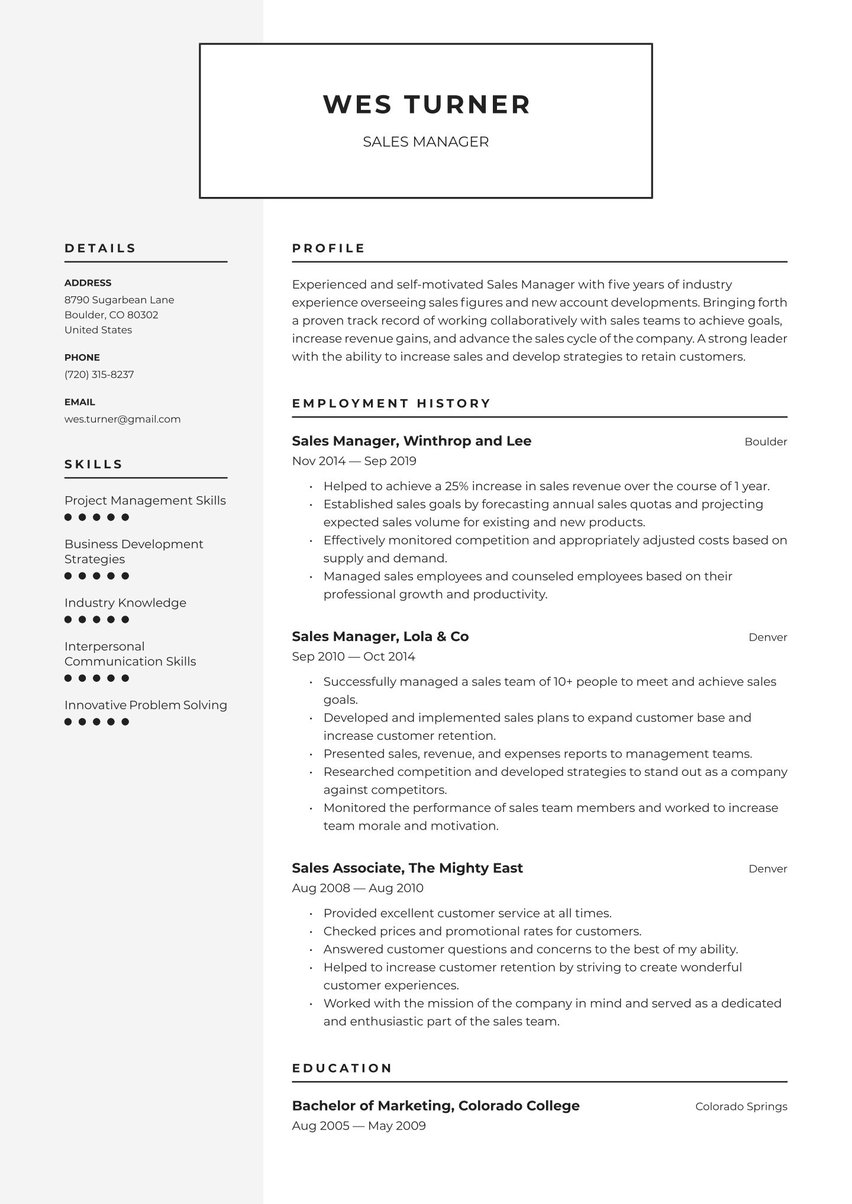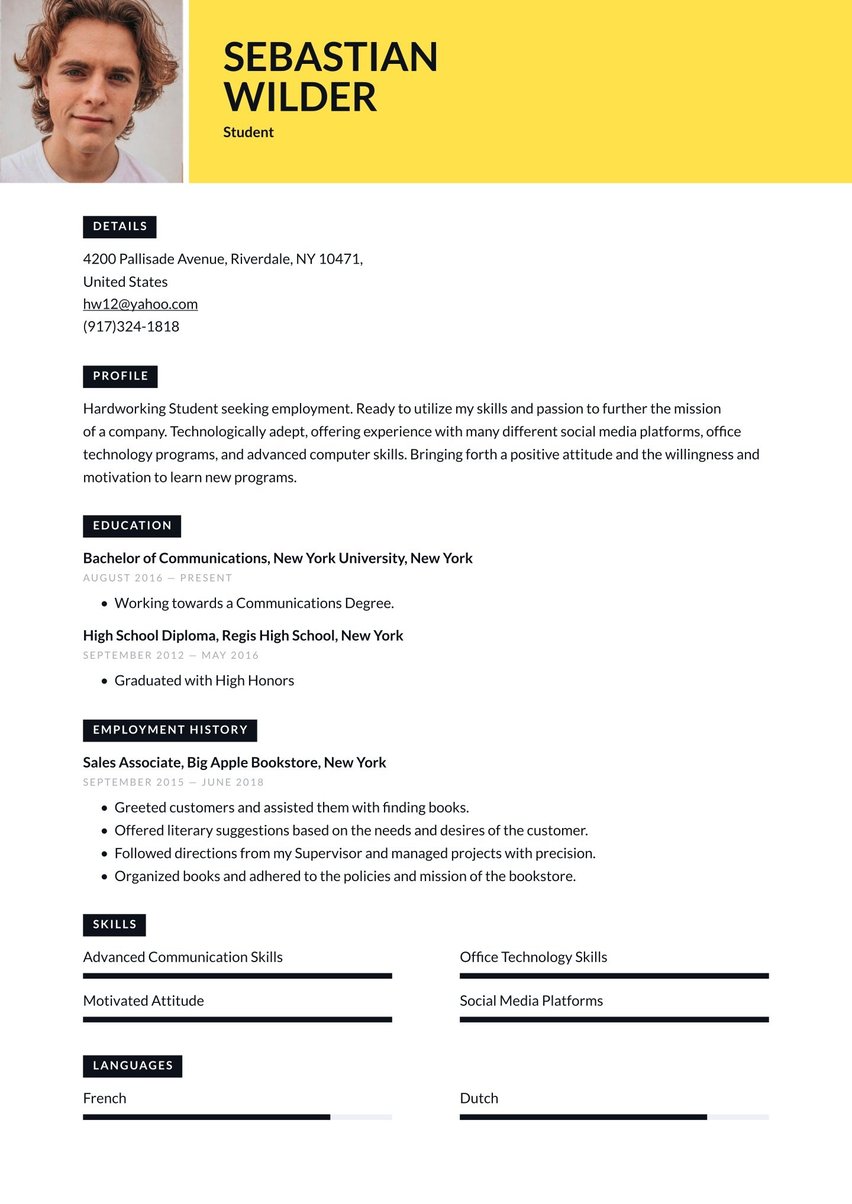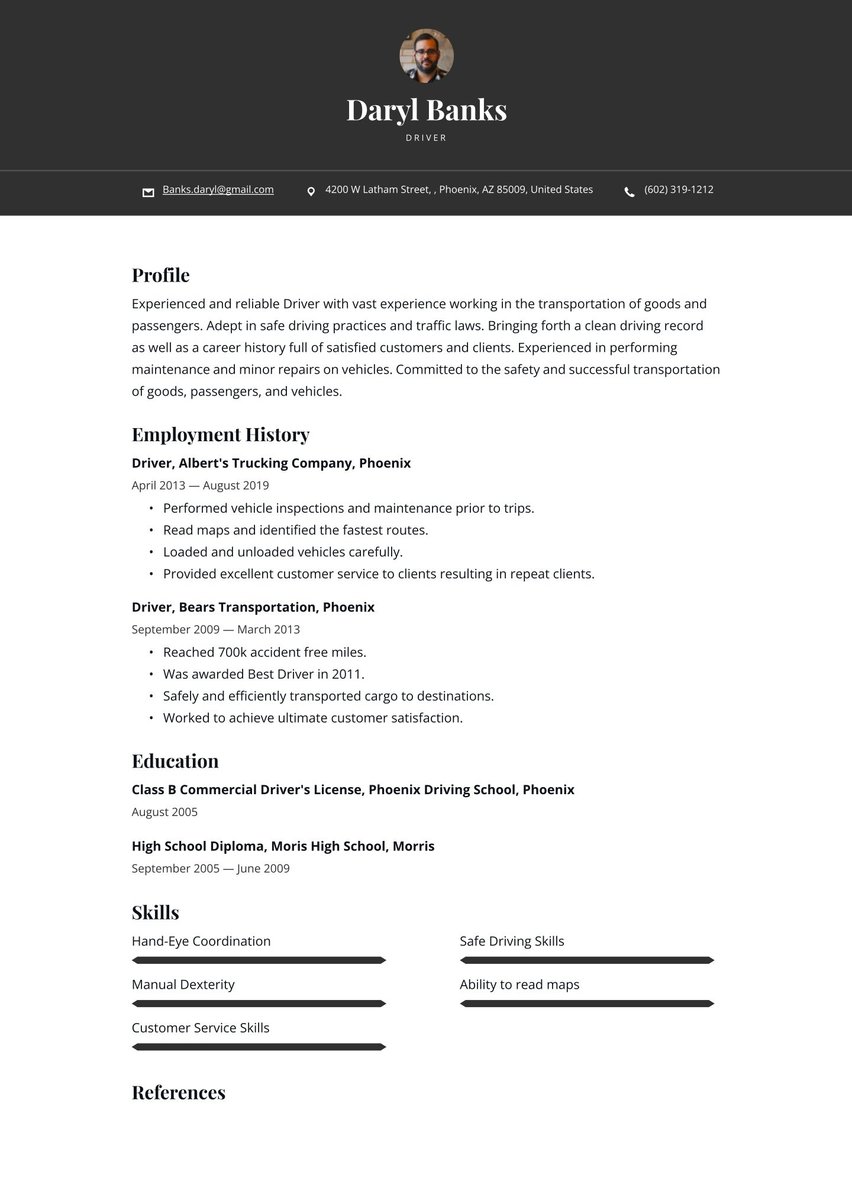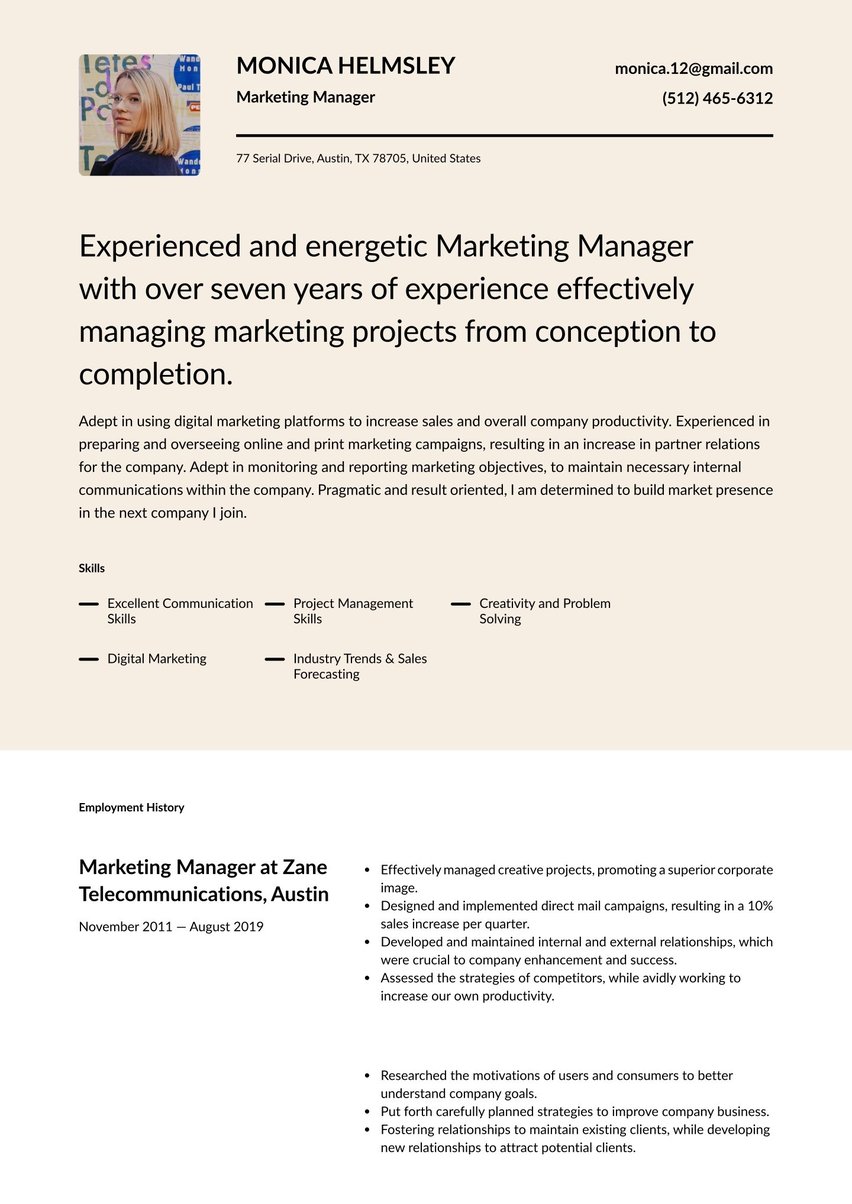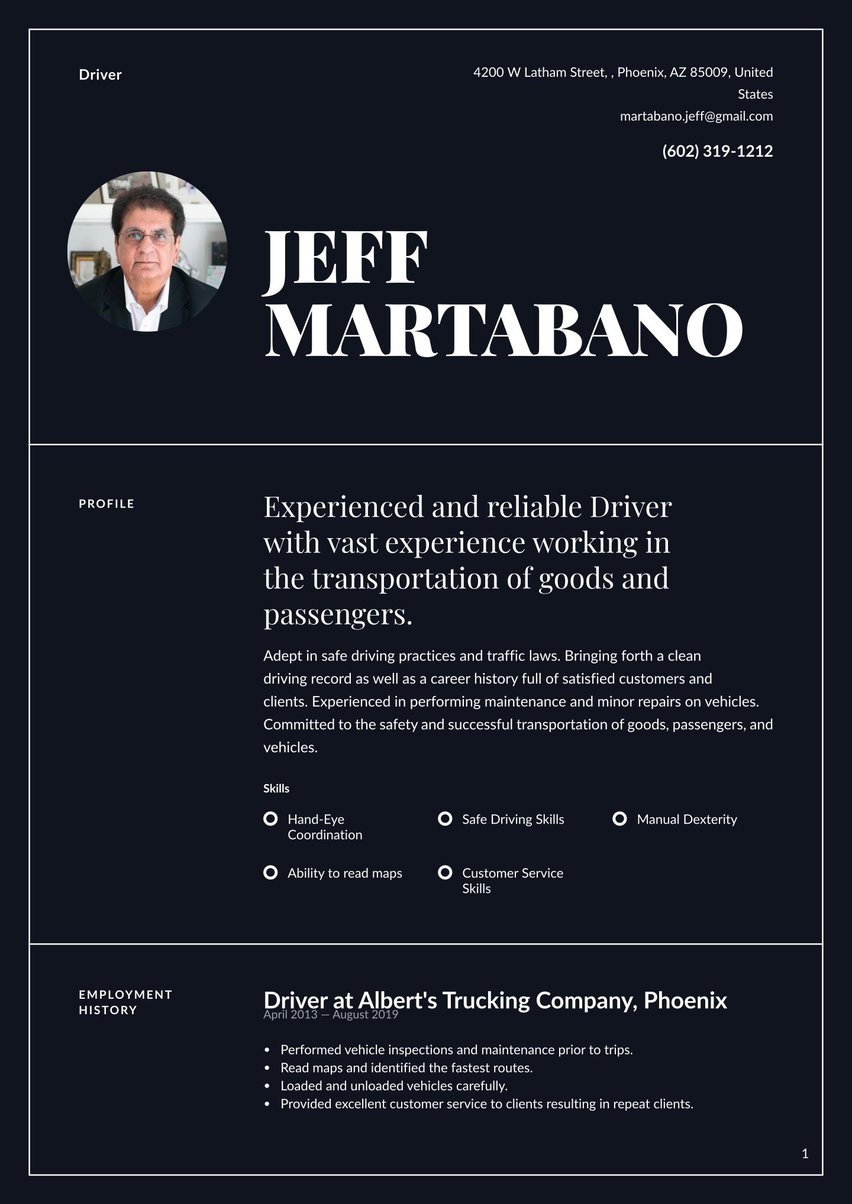Highly experienced in all aspects of retail management within busy, fast-paced clothing sales environments. Able to shift gears rapidly and adapt to a wide range of retail needs and schedules. Prepared to leverage small business management skills in a new challenge.
03/2011 - present, Retail Operations Manager, Steph's Boutique, Portland, ME
- Built business from the ground up providing affordable, chic clothing to visitors of vibrant downtown Portland.
- Selected location, designed welcoming, appealing storefront and and assembled / decorated all store fixtures.
- Perform all business, financial and customer service functions and hire / train part-time sales staff.
- Keep sales records, balance register, maintain POS systems and perform all accounting and financial forecasting functions.
04/2009 - 01/2011, Clothing Department Sales Assistant, Target, Portland, ME
- Assisted customers with locating, sizing and selecting garments and accessories.
- Utilized POS system to complete sales and handle returns.
- Consistently exhibited engaging, outgoing demeanor in all customer interactions.
- Worked with managers in resolving issues with purchases, returns and dissatisfied customers.
09/2008 - 05/2010, Associate of Science in Business Administration, Southern Maine Community College, South Portland, ME
- GPA: 3.8/4.0.
- Honors Graduate.
- President, Student Fashion Club.
- Retail Store Operations
- Accounting & Bookkeeping
- Visual Merchandising
- Business Management
- POS Systems
- Conflict Resolution
- Microsoft Office
- Payroll & Scheduling
04/2012 - 10/2012, Assets in Accounting, Coursera
Creating a successful small business is both challenging and rewarding, but the benefits extend far past the owner. Small businesses are the backbone of communities around the world, so you’ll want your resume to be as strong as you are. Since no two small business owners have the same story, trying to fit your unique experience on a resume can feel a bit daunting. Luckily, there are basic guidelines to help you share your passion and skills on a resume.
Small Business Owner resume examples by experience level
With 300+ resume examples and writing guides for jobs across industries, Resume.io is an expert resource for job seekers in every stage of their careers. This resume guide, along with the corresponding resume example will cover the following topics:
- What does a small business owner do?
- How to write a small business owner resume (tips and tricks)
- The best format for a small business owner resume
- Advice on each section of your resume (summary, work history, education, skills)
- Professional resume layout and design hints.
Want more proof of the economic value small businesses provide? Nearly half of all U.S. employees work for small businesses which have added over 12.9 million jobs in the past 25 years, according to Forbes.
What does a small business owner do?
Small business owners are defined simply by the fact that they own their own company which may take any number of forms including a physical shop, a website, or a service business. Small business owners are often entrepreneurial-minded people who take on a variety of roles within their companies. While specific duties often vary depending on the sector, some common tasks of small business owners include:
- Developing the business concept and defining the goods or services to be offered
- Finding, renting, or buying a location for brick-and-mortar businesses
- Maintaining shop appearance and product display
- Ordering inventory
- Hiring and training staff
- Bookkeeping and payroll management for employees or vendors
- Creation of a website and marketing materials for online businesses
- Ordering equipment or supplies needed for business operations
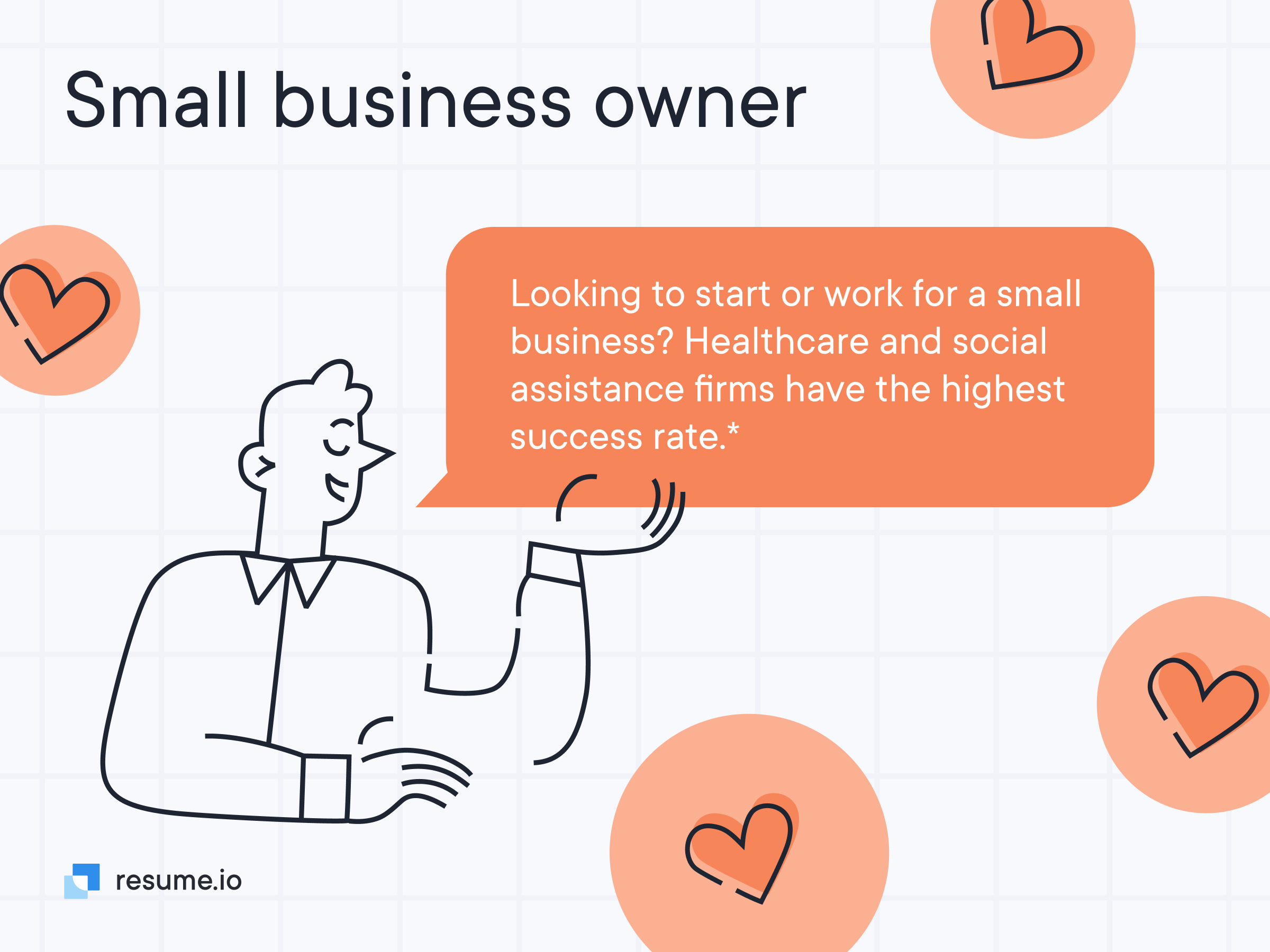
How to write a small business owner resume
The very first step in writing your small business owner resume is understanding what sections to include. Your CV should contain the following elements:
- The resume header
- The resume summary (aka profile or personal statement)
- The employment history section
- The resume skills section
- The education section
There are many reasons why a small business owner may need to write a resume, including when selling the business and merging with another company, when looking for a second job, or when applying for a grant or other aid program. By identifying your reason for writing this resume, you can customize it for the needs of the employer or other person who will be reading it. A tailored resume is one of the best ways to ensure you make a great first impression and come across as a serious and motivated candidate.
Owning a small business is a journey in its own right and you may feel that you have loads to say about your experience and skill set. However, most resumes should be kept to a maximum of one page meaning that every sentence should serve a purpose. Aim to use action verbs, numbers, and key statistics to highlight your strongest qualities and the transferable skills you've acquired as a small business owner.
Choosing the best resume format for a small business owner
Because of the varied nature of owning a small business, you have a variety of options when it comes to choosing the best format for your resume. If you have traditional employment experience to show in addition to your small business, you should opt for the reverse chronological resume. This format is often considered the “standard” structure since it’s what most hiring managers expect to see. A reverse chronological resume gets its name from its focus on the employment history section where previous experiences are listed from most recent to oldest.
If you work in a highly technical field or you think your skills are your strongest selling point, a functional resume might be better suited to your experience. This format starts with the skills section and contains a very minimal work history section. A hybrid format or combination of functional and reverse chronological format is the best choice for those who want to highlight specialized skills along with traditional employment.
Resume header
The first essential section of a great resume is the header, which is usually found at the very top of the page or as a side column. The header serves to label your document and keep your name and contact information at the hiring manager’s fingertips so they can easily contact you. If you’d like to showcase your small business further, you can include your LinkedIn or another professional social media account. The design of your header is also an important element to consider and we’ll discuss it further in a later chapter. Check out our adaptable resume sample for more ideas on creating a small business resume header.
Resume summary example
The resume summary is the first section after the header. The purpose of these 3-5 sentences is to introduce yourself and your key experiences so that the hiring manager will continue to read your application. If your small business is your proudest accomplishment, make sure to mention it here along with any impressive metrics like sales, noteworthy clients, or expansion plans. The summary should also showcase your personality in a professional and positive manner. Below you’ll find an adaptable summary resume example that you can modify for your own experience.
Highly experienced in all aspects of retail management within busy, fast-paced clothing sales environments. Able to shift gears rapidly and adapt to a wide range of retail needs and schedules. Prepared to leverage small business management skills in a new challenge.
Since the summary is the most free-form section of the resume, it’s worth checking out our related resume examples for inspiration:
Employment history example
One of the biggest challenges of writing your small business owner resume will likely be crafting an employment history section that captures the breadth of your experiences. While the standard employment history section is geared towards traditional employment, there are plenty of ways to make your unique experience shine. If you have multiple employment entries, simply list your small business as the most recent. Mention the business name, your role as the owner or founder, the date started, and the location. Then add 4-5 bullet points that clearly demonstrate your ability to create a successful small business. Add other types of employment below this entry with the same key elements. Get started with our adaptable resume example below.
Retail Operations Manager at Steph's Boutique, Portland, ME
March 2011 - Present
- Built business from the ground up providing affordable, chic clothing to visitors of vibrant downtown Portland.
- Selected location, designed welcoming, appealing storefront and and assembled / decorated all store fixtures.
- Perform all business, financial and customer service functions and hire / train part-time sales staff.
- Keep sales records, balance register, maintain POS systems and perform all accounting and financial forecasting functions.
Clothing Department Sales Assistant at Target, Portland, ME
April 2009 - January 2011
- Assisted customers with locating, sizing and selecting garments and accessories.
- Utilized POS system to complete sales and handle returns.
- Consistently exhibited engaging, outgoing demeanor in all customer interactions.
- Worked with managers in resolving issues with purchases, returns and dissatisfied customers.
What if my small business is my only employment to date?
There are a few ways to handle this situation. One option is to create a functional or combination resume that highlights the skills you gained as a small business owner first and foremost. You can also rename your Employment History section to “Experience” and add a variety of other positions like volunteer or leadership roles.
Resume skills example
The skills section of your CV is at the heart of any complete small business owner resume. Your experience has no doubt given you a wide range of skills that could be applied across industries. However, before writing this section, take a moment to reread the job description you are applying for. Look for the overlap between the employer’s needs and your best qualities. Those are the skills to focus on in this section. Make sure to pair your list down to the top four or five skills and use the employer’s exact language when adding them to your CV. See our adaptable skills resume example below.
- Retail Store Operations
- Accounting & Bookkeeping
- Visual Merchandising
- Customer Service
- Business Management
- Leadership
- Business Analysis
- POS Systems
- Conflict Resolution
- Microsoft Office
- Time Management
- Payroll & Scheduling
- Fast Learner
- Adaptability
Small business owner resume education example
Small business owners come from a variety of educational backgrounds so this section may change form depending on your experience and the job you are applying for. As a general rule, if you’ve completed any advanced degree, relevant training program, or certificate then you should include it in an education section along with the school name, dates attended, and location. You may also choose to add bullet points with any noteworthy courses. Your GPA is only relevant if you are a recent graduate and it is particularly impressive. Otherwise, you’ll likely want to leave it off and let your small business experience take center stage. See our adaptable education resume example below.
Associate of Science in Business Administration, Southern Maine Community College, South Portland, ME
September 2008 - May 2010
- GPA: 3.8/4.0.
- Honors Graduate.
- President, Student Fashion Club.
Resume layout and design
Before a hiring manager or other reader finds out about your small business experience, the layout and design of your resume are the first things they will notice. It’s important to convey the right qualities in your presentation, so take a closer look at the company or organization you are applying to. Your design should leave the employer with no doubt that you’d fit into the company culture. If you’re not applying for a grant instead of a new job, make sure your layout mimics the branding and look of your small business so that your personality can fully shine through. Here are a few more tips:
- Create an attractive header with a professional accent color
- Keep a balance of white space to text
- Try out a resume template to make formatting much faster
- Change the margin size to squeeze in more information
- Use more than one or two fonts styles
- Forget to proofread before submitting
Small Business Owner text-only resume example
Profile
Highly experienced in all aspects of retail management within busy, fast-paced clothing sales environments. Able to shift gears rapidly and adapt to a wide range of retail needs and schedules. Prepared to leverage small business management skills in a new challenge.
Employment history
Retail Operations Manager at Steph's Boutique, Portland, ME
March 2011 - Present
- Built business from the ground up providing affordable, chic clothing to visitors of vibrant downtown Portland.
- Selected location, designed welcoming, appealing storefront and and assembled / decorated all store fixtures.
- Perform all business, financial and customer service functions and hire / train part-time sales staff.
- Keep sales records, balance register, maintain POS systems and perform all accounting and financial forecasting functions.
Clothing Department Sales Assistant at Target, Portland, ME
April 2009 - January 2011
- Assisted customers with locating, sizing and selecting garments and accessories.
- Utilized POS system to complete sales and handle returns.
- Consistently exhibited engaging, outgoing demeanor in all customer interactions.
- Worked with managers in resolving issues with purchases, returns and dissatisfied customers.
Skills
- Retail Store Operations
- Accounting & Bookkeeping
- Visual Merchandising
- Customer Service
- Business Management
- Leadership
- Business Analysis
- POS Systems
- Conflict Resolution
- Microsoft Office
- Time Management
- Payroll & Scheduling
- Fast Learner
- Adaptability
Education
Associate of Science in Business Administration, Southern Maine Community College, South Portland, ME
September 2008 - May 2010
- GPA: 3.8/4.0.
- Honors Graduate.
- President, Student Fashion Club.
Key takeaways for a small business owner resume
- Your small business is a super power to propel your job search – if you can create a strong and convincing resume.
- Don’t forget to pay attention to the needs of the employer and focus on the skills and experience areas that are most relevant to the position you are applying for.
- Adjust your resume format based on your needs. While the reverse chronological is most common, there are other options.
- Check out our adaptable small business owner resume example as a starting point for your own application.


.jpg)

.jpg)




























